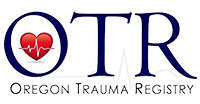Designation Levels

Trauma hospitals are distinguished from other facilities in that they guarantee the immediate availability of surgeons, anesthesiologists, physician specialists, nurses, ancillary services, and resuscitation life-support equipment on a 24-hour-a-day basis, dedicated to the care of trauma patients.
Trauma facilities are designated or categorized as Level
I,
II,
III, or
IV, with Level I and II centers offering the highest level of care. Oregon has adopted, with few modifications, the American College of Surgeons' "Optimal Standards of Care of the Trauma Patient" as the
minimal acceptable standards.
Oregon ATAB Regions Map Oregon ATAB Regions Map
About the Designations
Level I Hospitals
The role of the
Level I trauma center is to provide the highest level of definitive, comprehensive care for the severely injured adult and pediatric patient with complex, multi-system trauma. A Level I facility is the regional resource trauma center in the system and has the capability of providing total patient care for every aspect of injury from prevention through rehabilitation. Highly specialized care for pediatric trauma, burns, spinal cord injury, eye injury, limb reimplantation, and other clinical problems is available at the Level I center. An emergency physician, general surgeon, anesthesiologist, and nursing and ancillary personnel who can initiate immediate surgery are in-house and available to the patient upon arrival to the emergency department. A neurosurgeon is on-call and promptly available to the patient. A broad range of sub-specialists are on-call and promptly available to provide consultation or care. In addition to direct patient care, Level I trauma centers are responsible for resident training, research, regional quality improvement, community education, outreach, and injury prevention.
Level II Hospitals
The role of the
Level II trauma center is to provide definitive care for severely injured adult and pediatric patients with complex trauma. The services available at a Level II trauma facility and the resource requirements are similar to those at a Level I trauma center. Physicians who are ATLS trained and experienced in caring for traumatically injured patients, nurses, and ancillary staff are in-house and immediately available to initiate resuscitative measures. A board certified general surgeon and anesthesiologist are on-call and available to the patient. A neurosurgeon is on-call and promptly available. There is a broad range of specialists available for consultation or care, and comprehensive diagnostic capabilities and supportive equipment are available. Level II trauma centers serve as regional resource centers for definitive care, quality assurance, community education, outreach, and injury prevention.
Level III Hospitals
The role of the
Level III trauma center is to provide initial evaluation and stabilization, including surgical intervention, of the severely injured adult or pediatric patient. A Level III trauma center provides comprehensive inpatient services to those patients who can be maintained in a stable or improving condition without specialized care. Critically injured patients who require specialty care are transferred to a higher level trauma system hospital in accordance with criteria established in the Area Trauma Plan. An in-house multidisciplinary trauma resuscitation team is immediately available upon arrival of the patient to the emergency department. A board certified general surgeon trained in ATLS is on-call and available to the patient. Level III trauma centers also provide community education, outreach, and injury prevention programs
Level IV Hospitals
The role of the
Level IV trauma center is to provide resuscitation and stabilization of the severely injured adult or pediatric patient prior to transferring the patient to a higher level trauma system hospital. Resuscitation and stabilization may involve surgical intervention. Trauma trained nursing personnel are immediately available to initiate life-saving maneuvers. Physicians trained in ATLS are promptly available to provide patient resuscitation, and in most cases are present upon patient arrival to the hospital. Ancillary personnel are also in-house or promptly available at all hours of the day. Level IV trauma centers have all of the appropriate equipment and diagnostic capabilities to resuscitate the severely injured patient. Most Level IV trauma facilities provide community education, outreach, and injury prevention resources.